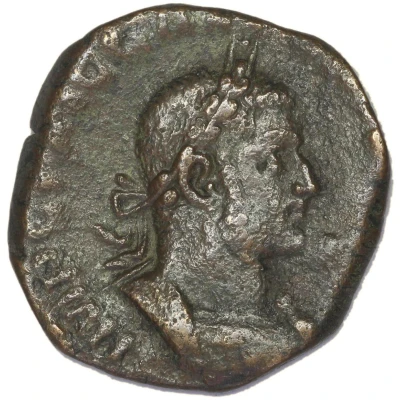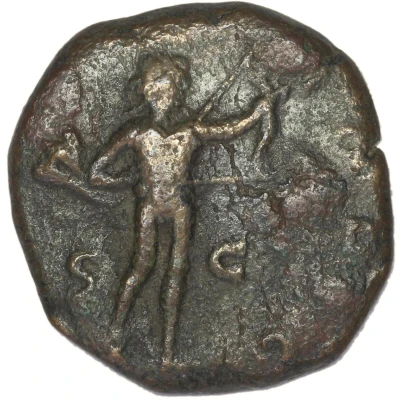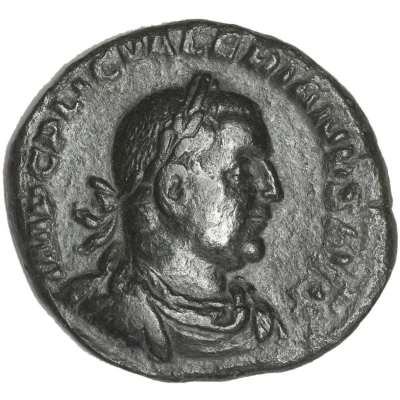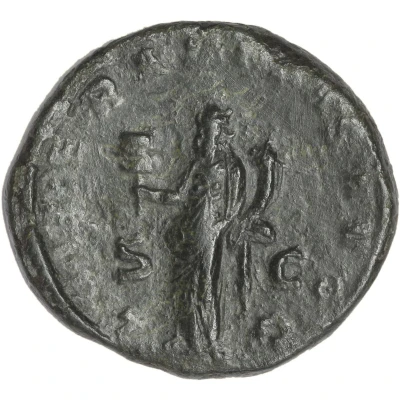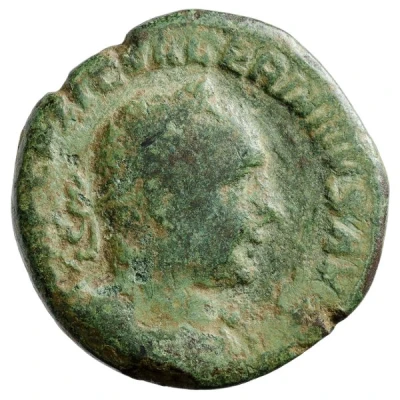
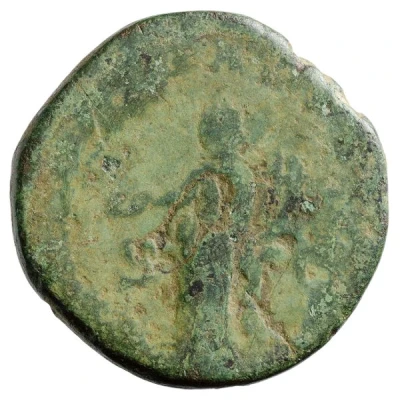

© Münzkabinett der Universität Göttingen (CC BY-NC 4.0 DE)
Sestertius - Valerianus CONCORDIAE AVGG S C; Concordia
| Bronze | 15.3 g | - |
| Issuer | Rome › Roman Empire (27 BC - 395 AD) |
|---|---|
| Emperor | Valerian (Publius Licinius Valerianus) (253-260) Gallienus (Publius Licinius Egnatius Gallienus) (253-268) |
| Type | Standard circulation coin |
| Years | 253-256 |
| Value | Sestertius (⅛) |
| Currency | Antoninianus, Reform of Caracalla (AD 215 – 301) |
| Composition | Bronze |
| Weight | 15.3 g |
| Shape | Round (irregular) |
| Technique | Hammered |
| Demonetized | Yes |
| Updated | 2024-10-05 |
| Numista | N#286036 |
|---|---|
| Rarity index | 100% |
Reverse
Concordia, draped, standing left, holding patera in right hand and double cornucopiae in left hand.
Script: Latin
Lettering: CONCORDIAE AVGG S C
Translation:
Concordiae Duorum Augustorum. Senatus Consultum.
To the harmony of the two emperors (Augusti). Decree of the senate.
Comment
Example of this type:Münzkabinett der Universität Göttingen
Source:
Online Coins of the Roman Empire (OCRE)
Interesting fact
One interesting fact about this coin is that it features an image of the Roman goddess Concordia on the reverse side, which symbolizes harmony and unity. This is significant because it suggests that the Roman Empire valued these qualities and wanted to promote them through their currency. Additionally, the fact that the coin was made of bronze, a relatively inexpensive material, suggests that it was intended for widespread circulation and use among the general population.
